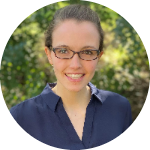Many case studies demonstrate the benefits of organizations developing internal R packages. But how do you move your organization from individual internal packages to a coherent internal ecosystem?
This talk applies the jobs-to-be-done framework to consider the different roles that internal tools can play, from unblocking IT challenges to democratizing tribal knowledge. Beyond technical functionality, we will explore design principles and practice that make internal packages good teammates and consider how these deviate from open-source standards.
Finally, we will consider how to exploit the unique challenges and opportunities of developing within an organization to make packages that collaborate well — both with other packages and their human teammates.

Emily Riederer is an Analytics Manager at Capital One. Emily leads a team that is focused on building internal analytical tools and data products, including a suite of R packages and Shiny apps, and cultivating an innersource community of practice for analysts. Emily is an active member of the R community. In 2019, she co-organized satRday Chicago and the Chicago R unconference. You can find her {projmgr} R package on CRAN and her blog at emilyriederer.netlify.com. Previously, Emily earned degrees in Mathematics and Statistics at UNC Chapel Hill and worked as a research assistant in emergency department simulation and optimization.